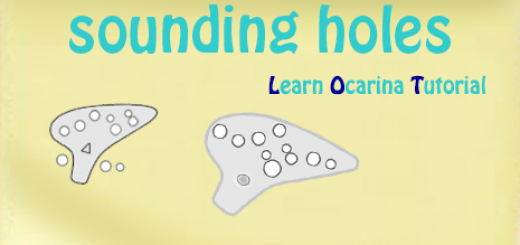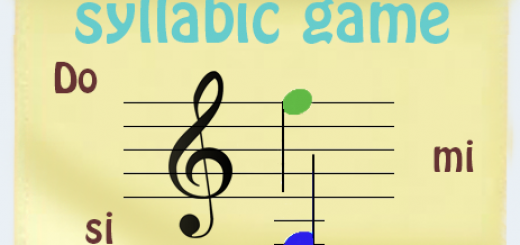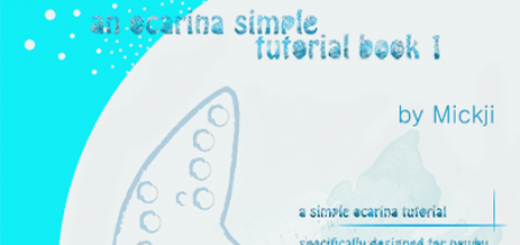Learn sheet music – Notations
Like we said before, there are different methods to write the musical notes to let us play a song.
The main notations types for the ocarina are: alphabetical, syllabic, numerical and the visual tablature.
Alphabetical notation
( or letter notation)

This is probably the easiest kind among all the notations to learn for everyone around the world. The progression goes like the alphabet. Starting from C, it will looks like:
C D E F G A B
As it was mentioned before, there are few variations to this progression of letters. This depends on the region.
The German alphabetical notation will be:
C D E F G A H
Another difference between the German and the other notations is in the way sharps and flats are written.
In the German alphabetical notation the chromatic scale will be:
C Cis/Des D Dis/Es E F Fis/Ges G Gis/As A Ais/B
Instead of :
C C#/D♭ D D#/E♭ E F F#/G♭ G G#/A♭ A A#/B
You can find # and ♭ written both in front or behind the musical note in these kind of notations. In the sheet music page, they will always be written in front of the dot that represent the musical note.
Syllabic notation
( or latin notation)
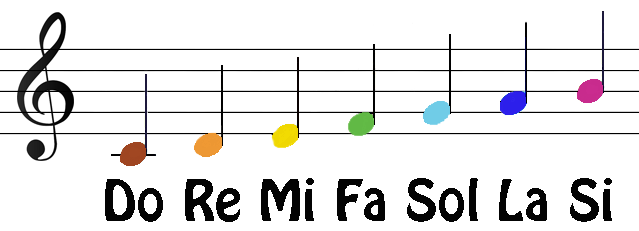
Do Re Mi Fa Sol La Si
This notation is also used in singing.
The English variation of this notation is: Do Re Mi Fa So La Ti
The Asian variation of this notation is: Do Ri Mi Fa So La Si
Numerical notation
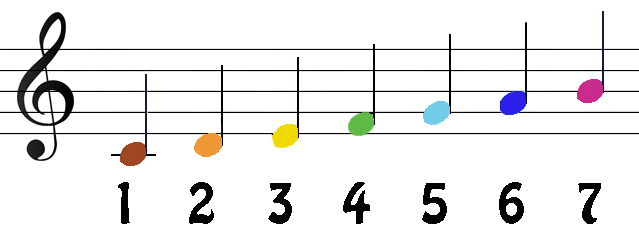
This kind of notation is mostly used in Asia and less spread in the other part of the world. In Chinese you will find scores with 製譜 (zhipu) attached to the song's title.
In a numerical score are used 7 numbers as 7 are the musical notes. Number 1 corresponds to the key note of the song.
In case of a song in C Major, 1 will be played as C and the progression is as follow:
1 2 3 4 5 6 7
Where the notes are C D E F G A B.
This method is a bit special because it doesn't only tells you which musical notes are played, but also tells you how to play them. You will find some dots upon or under the numbers, which tells you the pitch of the note. One dot or two dots on the top of the number indicates that this musical note is one octave or two octaves higher than the normal note that is usually played. One dot under the number means that the musical note is one octave lower than the normal one.
You will also find some symbols that tell you the length of the musical note and some articulations.
1 - - -
1 - -
1
1
1
On the top is wrote the longest note and at the bottom the shorter one.
1 with 3 lines at the side is a full note, it is the 4/4 in sheet music.
1 with 2 lines at the side is a 2/4 note in sheet music notation.
1 is the quarter note.
1 with a single line at the bottom is a 1/8 in sheet music notation.
1 with two lines at the bottom is a 1/16 in sheet music notation.
A limit of the numerical score is the "staccato", because a dot upon or under the number will only change its tone instead of its length. The comma will not be of any help too because it is a mark that indicates pauses where you take breath.
If you don't know what staccato is, please visit the Learn sheet music – articulations article.
Visual Tablature
Tablature are literally draw of the ocarina you are using, with all the holes drawn on it. These holes can be white if they are open and black if they are closed. They show you the fingering that you have to use of every musical note that composes the song.

Visual tablature have different levels of difficulty, because other than a simple succession of musical notes, you can find some sheet music marks on it to help you know the rhythm too. In this way you will be able to play a song without having to listen to it if you have never heard it, or simply recall it in your memory. On this website they are called TTabs or Tempo Tabs.

For a wide list of fingering charts divided per maker you can have a look at the Learn ocarina – fingerings article.
Spectrum
(陶笛譜)
Generally used to describe a combination of two different notations. It is often used to play sheet music when you are not yet able to read it.

A combination of sheet music and tablature.

A combination of numerical score and tablature.
There is also the combination of sheet music and numerical score but it's rarely used for playing songs rather than used by students to learn the other kind of notation.
You can also use the Learn sheet music – guide list to travel to through the whole sheet music tutorial.
If you don't feel prepared for all of this, you can check the Learn ocarina – Guide list and start from the very basic theory of ocarina and look at sheet music in a second moment.
Also, donations are very welcome. To keep the service going, to help pay the copyright fees, pay the rights of the people that helped in the process of song's arrangement and more please consider donate using the button below:
Banners added on this website by Autopilot.
